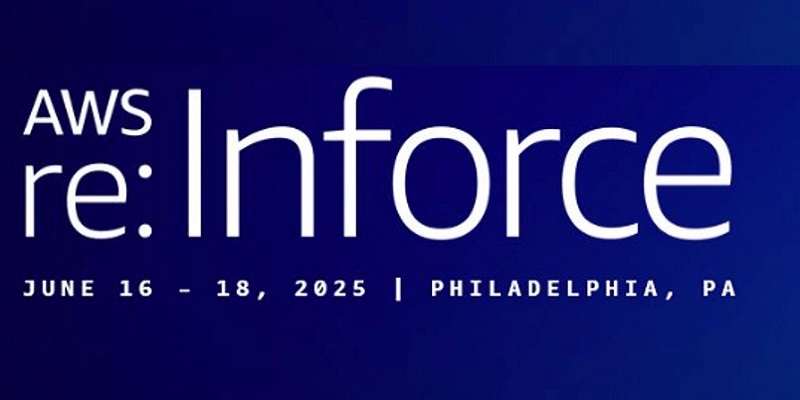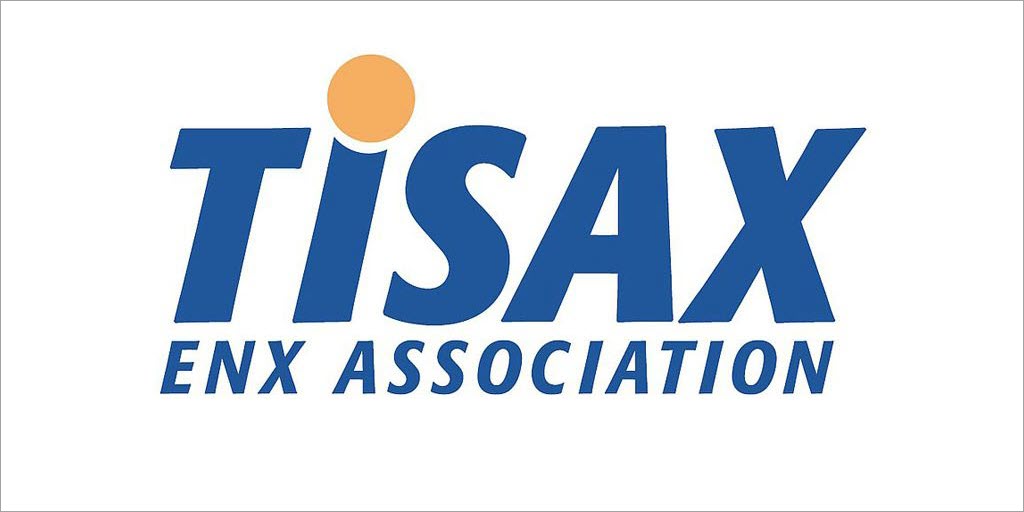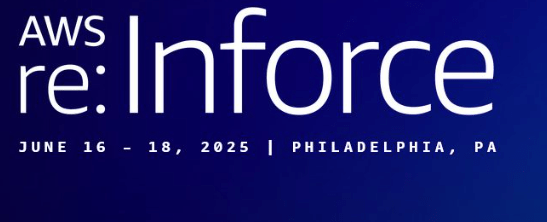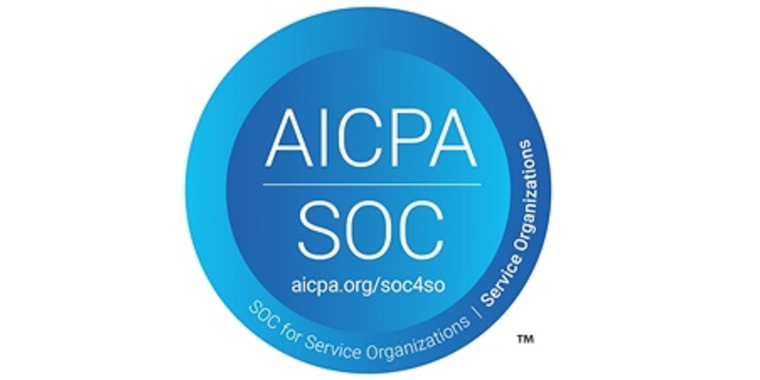A full conference pass is $1,099. Register today with the code flashsale150 to receive a limited time $150 discount, while supplies last.
Join us in Philadelphia on June 16–18, 2025, for AWS re:Inforce, where you can enhance your skills and confidence in cloud security, compliance, identity, and privacy. As an attendee, you will have access to hundreds of technical and non-technical sessions, an Expo featuring Amazon Web Services (AWS) experts and AWS Security Competency Partners, and keynote sessions led by industry leaders. AWS re:Inforce offers a comprehensive focus on key security areas, including application security (AppSec).
Key AppSec themes for 2025
The AppSec track helps you understand and implement best practices for securing your applications throughout the development lifecycle. For 2025, we’re focusing on several key themes:
Organizational strategies to ship quickly and securely
Learn about security ownership, partnerships like DevSecOps, comprehensive application security programs, and scaling application security expertise into workload teams. These sessions explore how organizations can build security into their development processes without sacrificing speed, focusing on practical approaches that distribute security responsibility effectively.
Secure by design
Make embedding security principles into the early stages of software architecture and design to mitigate vulnerabilities early, minimize risks, and recognize security as a core business requirement. Learn how leading organizations implement security as a foundational element rather than an add-on consideration.
Security of the pipeline
Security of the pipeline includes tooling, reference architectures, and best practices for securing the pipeline, including Supply chain Levels for Software Artifacts (SLSA), Supply Chain Integrity, Transparency, and Trust (SCITT), and code signing. Discover how to protect the systems and processes that build and deploy your applications.
Security in the pipeline
Security in the pipeline is achieved in part through testing methodologies including static analysis, dynamic analysis, responsible AI testing, software composition analysis, formal methods (automated reasoning), and dependency tracking. These sessions demonstrate how to integrate comprehensive security testing throughout your development lifecycle.
In the following sections, you’ll find a subset of some of the most exciting sessions happening in our AppSec track this year. For the full list, visit the re:inforce 2025 catalog.
Breakout sessions, chalk talks, lightning talks, and code talks
APS204 | Breakout session | Scaling security with Sportsbet’s Security Guardians program The Security Guardians program helps scale security across application teams by building and embedding security expertise. We dive deep on Sportsbet’s program where you will learn how to get started, key phases to consider, and the first learning steps for new guardians. Discover lessons learned, common challenges, and how to refine the program for long-term success. By integrating security into application teams early, Sportsbet fosters a culture of shared responsibility, improving security posture without slowing down development. We provide practical insights on launching and evolving a Security Guardians program to drive real impact across your organization.
APS301 | Breakout session | Improve code quality with Amazon Q Developer Amazon Q Developer is a generative AI assistant that goes beyond writing code—it can also improve documentation, generate unit tests, and automate code reviews. In this session, discover how to integrate Amazon Q Developer into your software development lifecycle to detect security issues using software composition analysis (SCA), static application security testing (SAST), and other code quality checks. Learn how to improve your codebase quality using the capabilities of Amazon Q Developer within the integrated development environment (IDE) and DevSecOps tooling.
APS401 | Breakout session | Build verifiable apps using automated reasoning and generative AI Large language models (LLMs) excel at generating creative solutions, while automated reasoning tools enable rigorous verification. This session explores methodologies for combining these complementary strengths to create more reliable AI systems. In this session, we introduce automated reasoning and demonstrate how formal methods can guide and constrain generative AI. By combining probabilistic and symbolic approaches, we show you how to build hybrid systems that maintain creative capabilities while ensuring verifiable outputs. We demonstrate how Amazon Q Developer and Amazon Bedrock Guardrails use automated reasoning to generate safe and logically correct output, free from hallucinations.
APS431 | Chalk talk | DevSecOps in action with Visual Studio Code & AWS IAM Access Analyzer Organizations face a critical balance between developer productivity and security compliance when managing AWS Identity and Access Management (IAM) policies. In this session, discover how integrating AWS IAM Access Analyzer with Visual Studio Code empowers developers to create secure IAM policies during development. Learn to implement automated policy checks that catch overly permissive permissions early, validate against organizational standards, and provide real-time feedback. This proactive approach helps security teams maintain control while giving developers the autonomy they need, ultimately reducing deployment risks and saving valuable development time.
APS341 | Code talk | Move fast and stay secure: Lessons learned from the AWS prototyping team When building prototypes and applications with technologies such as generative AI and serverless, it’s critical to move quickly and securely. In this code talk, learn how the AWS prototyping team successfully balances these goals. To meet user demand, AWS builds prototypes over a short amount of time while meeting a high bar for security expectations. Learn pointers, tips, and tricks to build quickly and securely, from threat modeling to using AWS Cloud Development Kit (AWS CDK) features, custom constructs, and blueprints to harden the security of your infrastructure and improve productivity.
APS441 | Code talk | Supercharge IaC security with AI: From commit to auto-remediation Dive deep into building an automated security feedback loop that combines Git commit signatures, static analysis, and generative AI to revolutionize infrastructure as code (IaC) security. Through live coding, we’ll demonstrate how to use Amazon Q Developer and Amazon Bedrock to analyze IaC templates, automatically detect and resolve issues, and generate contextual fix recommendations. Learn how to implement commit-based tracking for security findings, automate issue creation, and integrate with continuous integration and delivery CI/CD pipelines. Watch as we build a complete system that reduces the time from vulnerability detection to remediation from days to minutes.
APS442 | Code talk | Create memory safe applications using open source verification tools Memory-safety errors pose a significant security risk, enabling various attack vectors. At AWS, we prioritize memory-safety for unmanaged code handling customer data and processes. This talk presents two efforts to reduce memory-safety errors in Rust and C code. Both efforts involve developing verification tools for Rust and C code to check memory safety at scale that you can use. Our first effort verifies the Rust standard library, a core software resource, used by millions of developers. Our second effort uses a C model checker to verify C code for safety and correctness.
APS221 | Lightning talk | Building secure development into Amazon stores Amazon.com has long been at the forefront of investing in robust security measures to protect customer data. As the digital landscape evolves, so do our strategies. This session explores our journey of continuous improvement in security practices, focusing on integration throughout the software development lifecycle using AWS services. We’ll share the cutting-edge methods used by Amazon.com for embedding security at every development stage and discuss successes and learnings. Join us to discover how we’ve adapted our tactics to meet changing developer and customer needs and to ensure our commitment to protecting customer data remains stronger than ever.
APS222 | Lightning talk | Transform threat modeling using generative AI Discover how CRED, one of the biggest Fintech companies in India has used generative AI to automate threat modeling across their applications. Learn architectural patterns that enabled CRED to scale security analysis, improve risk identification, and enhance decision-making. See practical examples of integrating AI into security modeling workflows using Amazon Bedrock.
SEC221 | Lightning talk | Raising the tide: How AWS is shaping the future of secure AI for all AI security is a top priority for AWS. By building AI solutions that are secure by design, AWS helps you innovate quickly with confidence while mitigating emerging threats. But securing AI goes beyond individual organizations—it requires industry-wide standards and best practices. AWS actively contributes to global AI security efforts, including participation in industry standards bodies such as The Coalition for Secure AI (CoSAI), to help ensure that AI technologies are safe, resilient, and trustworthy. This session will explore how AWS is leading AI security innovation, protecting customers, and collaborating to help shape the future of AI security for the entire industry.
Workshops and builders sessions
APS351 | Securing generative AI agents using AWS Well-Architected Framework Learn hands-on how to build secure generative AI agent solutions following the AWS Well-Architected Framework Generative AI Lens security best practices. Work through practical implementations of endpoint security, prompt engineering guardrails, monitoring systems, and protection against excessive agency while building a production-ready generative AI agent. Through hands-on exercises, build a secure generative AI agent solution incorporating these controls on AWS, using Amazon Bedrock, Amazon CloudWatch, IAM, and more. You must bring your laptop to participate.
APS353 | Red-teaming your LLM security at scale Step into the shoes of an AI-powered red team adversary in the GenAI Red Team Challenge. In this intensive workshop, you’ll deploy an AI security agent to orchestrate sophisticated attack chains against generative AI applications, systematically discovering and exploiting vulnerabilities from prompt injection to boundary testing while mastering automated security testing workflows. In addition, you’ll learn how to apply countermeasures, from prompt templating to guardrails. This hands-on, gamified experience helps you think like a threat actor and equips you with practical skills in automated vulnerability testing and risk mitigation against common MITRE and OWASP vulnerabilities for LLM-based applications. You must bring your laptop to participate.
APS354 | Secure your application using AWS services and open source tooling AWS, open source, and partner tooling work together to accelerate your software development lifecycle. Learn how to use the Automated Security Helper (ASH), an open source application security tool, to quickly integrate various security testing tools into your software build and deployment flows. AWS experts guide you through the process of security testing locally on your machines and within a simulated pipeline using a sample generative AI application. Discover how to identify potential security issues in your applications through static analysis, software composition analysis, and infrastructure-as-code testing, and use Amazon Q Developer to review the results and generate remediation. You must bring your laptop to participate.
APS271 | Threat modeling for builders In this workshop, you will learn threat modeling core concepts and how to apply them through a series of group exercises. Key topics include threat modeling personas, key phases, data flow diagrams, STRIDE (spoofing, tampering, repudiation, information disclosure, denial of service, and elevation of privilege), and risk response strategies. We introduce a threat grammar rule and an associated tool. Exercises will have you identify threats and mitigations through the lens of each of the threat modeling personas. You will assemble in groups and walk through a case study. AWS threat modeling subject matter experts will be on hand to guide you and provide feedback. You must bring your laptop to participate.
APS371 | Securing your generative AI applications on AWS In this workshop, discover how to secure generative AI applications using AWS services and features. Explore how to deploy a vulnerable sample generative AI application and then layer security controls to protect, detect, and respond to security issues. Learn how to apply similar controls to the generative AI applications in your organization. You must bring your laptop to participate.
APS471 | Boost developer productivity with Amazon Q Developer and Amazon Bedrock Accelerate development and drive innovation with Amazon Q Developer and Amazon Bedrock. Discover how AI-powered automation and intelligent code assistance can reduce friction, speed up development cycles, and improve code quality. Explore real-world use cases such as AI-driven code reviews, automated testing, and smart documentation generation. Learn how to seamlessly integrate these tools into your workflows to boost efficiency, enhance collaboration, and elevate the developer experience—all while making sure of security and compliance. Whether optimizing existing processes or adopting AI for the first time, this session provides actionable insights to supercharge your development teams. You must bring your laptop to participate.
Conclusion
This post showcases a subset of the exciting AppSec sessions available at the upcoming AWS re:Inforce 2025 conference. If you’re interested in these topics, we encourage you to register for re:Inforce 2025, where you can attend these sessions and many more across the other security domain tracks. To discover the full range of sessions across all security tracks, check out the complete AWS re:Inforce catalog.
If you have feedback about this post, submit comments in the Comments section below.
Daniel Begimher
Daniel is a Senior Security Engineer specializing in cloud security and incident response solutions. He co-leads the Application Security focus area within the AWS Security and Compliance Technical Field Community, holds all AWS certifications, and authored Automated Security Helper (ASH), an open source code scanning tool. In his free time, Daniel enjoys gadgets, video games, and traveling.
Danny Cortegaca
Danny is a Security Specialist Solutions Architect and co-leads the Application Security focus area within the AWS Security and Compliance Technical Field Community. He joined AWS in 2021 and partners with some of the largest organizations in the world to help them navigate complex security and regulatory environments. He loves talking about application security with customers and has helped many adopt threat modeling into their practices.



